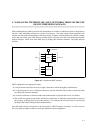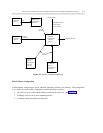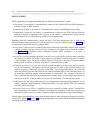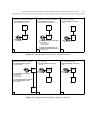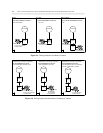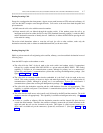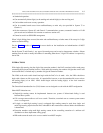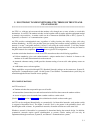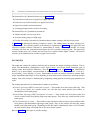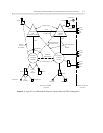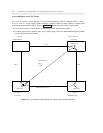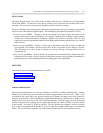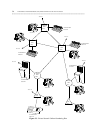MAIN-SATELLITE/TRIBUTARY (MS/T) NETWORKS THROUGH THE UDP OR MULTIPREMISES PACKAGES 4-9
_ ______________________________________________________________________________________
_ ______________________________________________________________________________________
_ ______________________________________________________________________________________
• Senderized operation.
• Can automatically delete digit(s) at the sending end and add digit(s) at the receiving end.
• Can be either touch-tone or rotary operation.
• Can do extended trunk access from satellite/tributary to main only (not provided in System 75 or
Generic 1).
• On the DIMENSION, System 85, and Generic 2 communications systems, automatic insertion of 2-dB
pads at each end to maintain loss contrast on station-to-station calls.
• Cannot be used in an ISDN-PRI arrangement.
When 3-digit dialing plans are used, the main and satellite/tributary switches must all be set up for 3-digit
station-to-station dialing.
See the Trunking section of chapter 1 for more details on the installation and administration of MS/T
trunks.
On the System 75 and Generic 1, any type of tie trunk group can be used to interconnect switches. Subnet
trunking must be used to modify the address if something other than a 7-digit ETN address is expected by
the far end.
INTERACTIONS
With single-digit steering, the first digit of the extension number is the DAC associated with a trunk group
connecting the main and satellite location. With multi-digit steering, the number of digits that can be used
for the trunk DAC is limited only by number of digits the extension number.
The LDNs at the main switch should not begin with the DAC of a tie trunk. Also, the LDNs should not
begin with a feature or dial access code. It is permissible, however, to use the attendant dial access code as
the leading digit(s) of an LDN. LDNs should begin with the leading digit(s) of the local extension
numbering plan.
The Centralized Attendant Service (CAS) feature was not designed to work with the MS/T configuration.
Other MS/T limitations are:
• Single-digit steering cannot be implemented between two systems if abbreviated dialing is used
between these systems.
• Call coverage cannot redirect a call over a trunk. Therefore, a terminal user at a remote system cannot
act as a coverage user.
• If single- or multi-digit steering is used, overlapped digit sending cannot be used since single- and
multi-digit steering require that the DAC embedded in the extension be collected before the destination
is determined.
• Extension numbers using multi-digit steering cannot be the controlling extension of a uniform call
distribution or direct department calling group.
• PRI trunks cannot be used as tie or access trunks in an MS/T complex.



